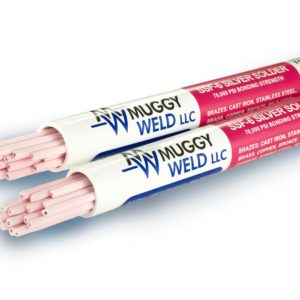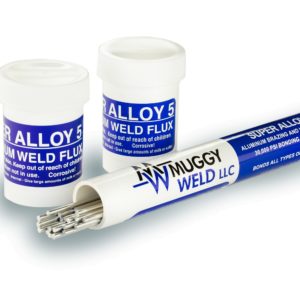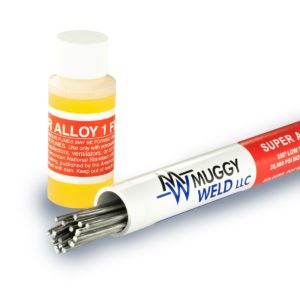How to Repair Gaps in Zinc with Super Alloy 1 350°F Multi-Metal Solder
Super Alloy 1 multi-metal solder and a propane torch are utilized to fill a sizeable gap between two zinc plates.
Zinc is a naturally occurring, bluish-white metal. Lighter than brass, zinc is malleable and strong, making it an affordable metal of choice for many industrial purposes including: die cast hardware, electrical components, pinions, gears, and the galvanization of steel.
Although zinc has a low melting temperature of 786°F, Super Alloy 1 rod and flux flow at 350°F, enabling even the novice welder to successfully repair zinc with a propane torch.
Always pre-clean your parent metal before soldering, to remove any oxidation or contaminates. Next, dip the Super Alloy 1 rod into the flux and apply the flux to the parent metal. Be sure to apply flux to both sides of the gap, to ensure optimal bonding.
Next, use a propane torch to broadly heat both pieces of parent metal. Watch as Super Alloy 1’s liquid honey flux transforms from honey colored to root beer brown–this is an indication that your parent metal has reached the proper working temperature.
At this point, gently lay the low temperature alloy rod onto the gap and pull back on the external heat. Allow the base metal to melt the rod rather than the torch.
Remove any excess flux with water and a wire brush, then check for pinholes. If you see any, simply re-apply Super Alloy 1 as directed above. The resulting bond is a strong 20,000 psi and can be plated, shaped, painted, polished or powder coated.
In addition to zinc, Super Alloy 1 bonds pot metal, copper, bronze, galvanized, brass, lead, steel, monkey metal, pewter, zinc plated steel, and Zamak–separately or in any combination. (brass to aluminum, copper to stainless etc)
Note: Please observe all AWS Safety & Health Guidelines when using Muggy Weld products.
Check Out These Products
-

Silver Solder Rod: Flux-Coated SSF-6 56% Brazing Rod
$69.00 – $260.00High-Strength, 56% Silver Solder Rod🌡 Melting Temperature 1150 / 621 ⇄︎ Bonding Strength 70000 psi, 482.63 MPa 🔧︎ Sizes Available (in) 1/16 🔧︎ Sizes Available (mm) 1.58 -

Super Alloy 5 Aluminum Welding and Brazing Rod
$69.00 – $109.00600°F aluminum welding, brazing, and soldering rod. Ideal for aluminum boat repair and cast aluminum.🌡 Melting Temperature 600 / 317 ⇄︎ Bonding Strength 30000 psi, 206.84 MPa

